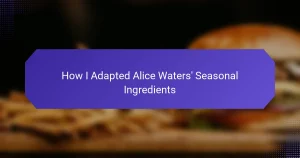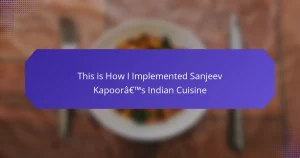Key takeaways
- Cooking challenges enhance skills and confidence through experimentation with various techniques.
- Precision cooking, particularly methods like sous vide, allows for controlled temperatures and consistent results.
- Thomas Keller emphasizes flavor layering, mise en place, and a thorough understanding of cooking science for successful culinary outcomes.
- Overcoming fears, mastering timing, and focusing on details can lead to significant personal growth and enjoyment in the kitchen.
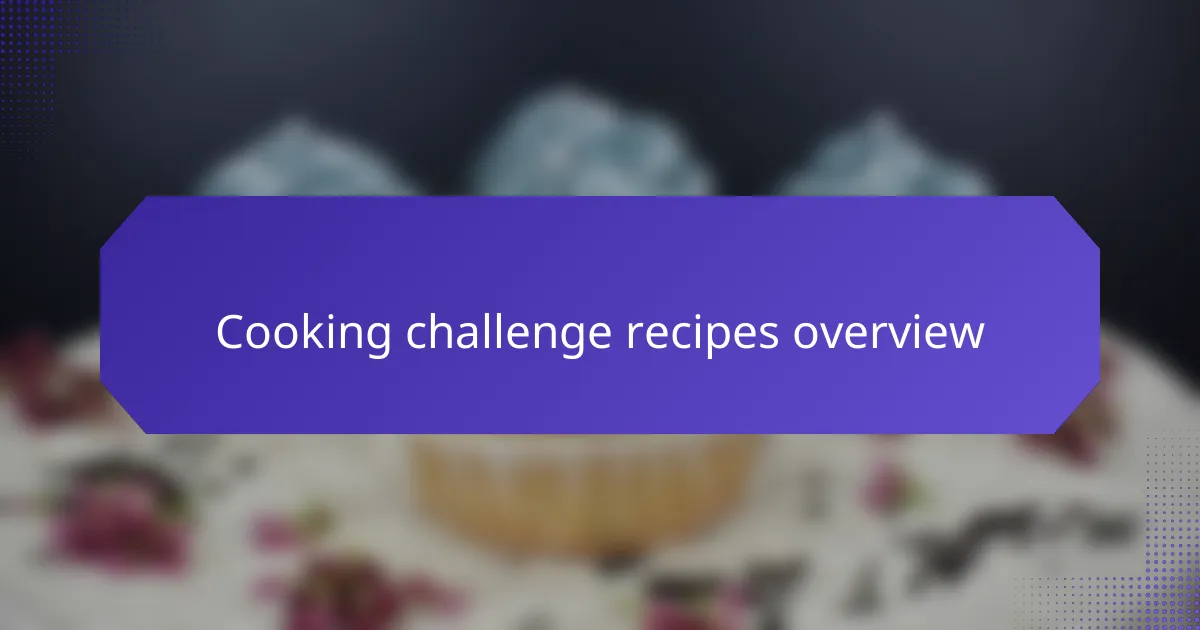
Cooking challenge recipes overview
Cooking challenge recipes can open up a world of culinary exploration. I remember the excitement of diving into a new recipe that pushed my boundaries. It’s about experimenting with techniques, much like Thomas Keller’s precision cooking, which demands more attention to detail than I had ever imagined.
Finding the right balance between creativity and precision was essential for me. I learned that cooking challenges not only sharpen your skills but also boost your confidence. It’s a thrilling journey that allows you to taste the fruits of your efforts in every delicious bite.
Here’s a comparison of different cooking challenge recipes that highlight various skills:
| Recipe | Key Technique |
|---|---|
| Sous Vide Steak | Temperature Control |
| Ramen from Scratch | Homemade Noodles |
| Macaron Challenge | Precision Baking |
| Beef Wellington | Layering Flavors |

Understanding precision cooking
Precision cooking is a game-changer for home chefs and enthusiasts alike. It involves cooking food to the perfect temperature using methods like sous vide, where meals are vacuum-sealed and immersed in a temperature-controlled water bath. I remember the first time I tried sous vide; it was a total revelation. The way a steak could emerge perfectly medium-rare, consistently throughout, was nothing short of magical.
With precision cooking, the focus shifts from simply following a recipe to mastering the science behind food. This approach allows you to achieve textures and flavors that are often unattainable through traditional cooking methods. I once prepared a perfectly cooked salmon using these techniques, and the outcome left me feeling like a professional chef in my own kitchen. The ability to control every element of the cooking process was both empowering and exhilarating.
Here’s a quick comparison of traditional cooking versus precision cooking:
| Traditional Cooking | Precision Cooking |
|---|---|
| Variable temperatures | Controlled temperatures |
| Skill-dependent | Science-driven |
| Risk of overcooking | Consistent results |
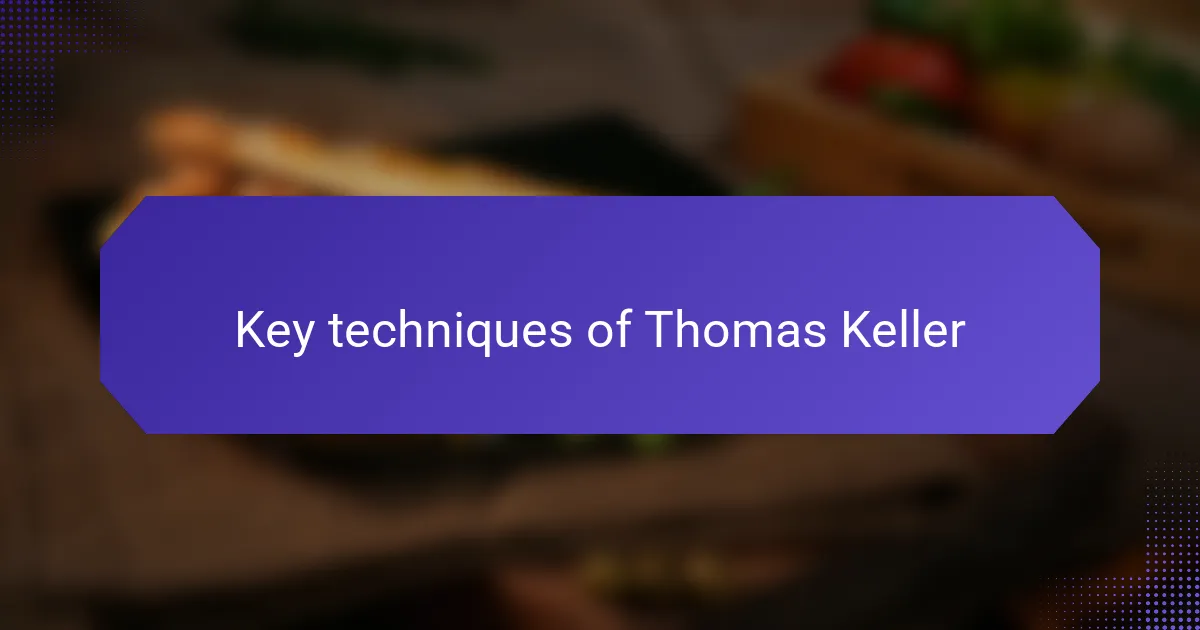
Key techniques of Thomas Keller
One of Thomas Keller’s key techniques is his meticulous approach to flavor layering. I’ve seen firsthand how a dish can transform when each ingredient is introduced thoughtfully. For instance, when I made his Beef Wellington, I realized that every component—from the mushroom duxelles to the pastry—needed precision to elevate the dish. It taught me the importance of not just layering flavors but also allowing each element to shine.
Another essential technique of Keller’s is the use of sous vide for perfect cooking results. When I first experimented with this method, I marveled at how consistent the textures turned out. Cooking a steak to the exact degree of doneness taught me that precision isn’t just about temperature; it’s about understanding how to achieve the best possible outcome with effortless control.
Keller also emphasizes the significance of mise en place. This French term translates to “everything in its place,” and it’s something that resonated with me deeply. Preparing and organizing all my ingredients ahead of time has not only streamlined my cooking process but also made it less chaotic. Have you ever started cooking only to realize you’re missing an essential ingredient? Trust me, proper mise en place eliminates that stress and enhances the overall cooking experience.
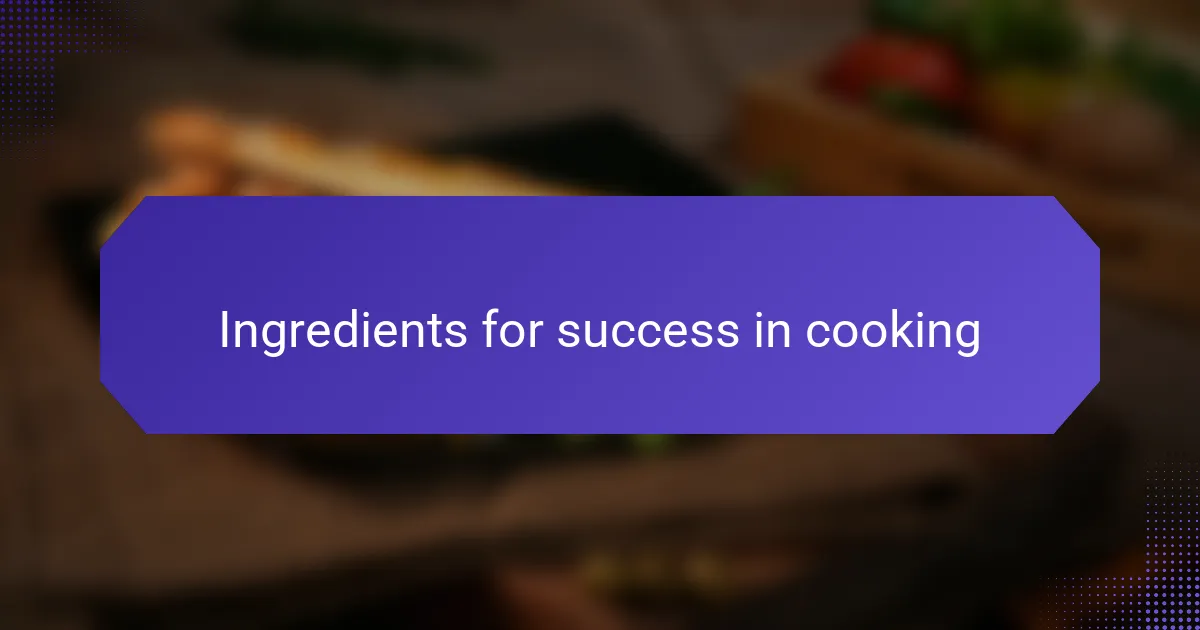
Ingredients for success in cooking
When I think about the ingredients for success in cooking, it goes beyond just what’s in your pantry. It’s about having the right mindset and tools. I remember the first time I tackled one of Thomas Keller’s recipes; I was both excited and intimidated. But I quickly learned that patience and preparation were just as crucial as the ingredients themselves.
Here’s a breakdown of the essential ingredients you should consider to ensure your cooking journey is both enjoyable and successful:
- High-quality proteins (such as fresh chicken or fish) for flavor and texture.
- A variety of fresh herbs and spices to elevate any dish.
- Superior oils and vinegars for dressing and marinades.
- Essential cooking tools (like a reliable chef’s knife and a quality skillet) to make the preparation easier.
- A good thermometer to ensure precision in cooking, especially for meats.
- Fresh, seasonal vegetables that add both nutrition and vibrant colors.
- Your willingness to learn from mistakes and embrace the process of cooking.
These components can set the stage for culinary excellence and make your kitchen endeavors truly rewarding.
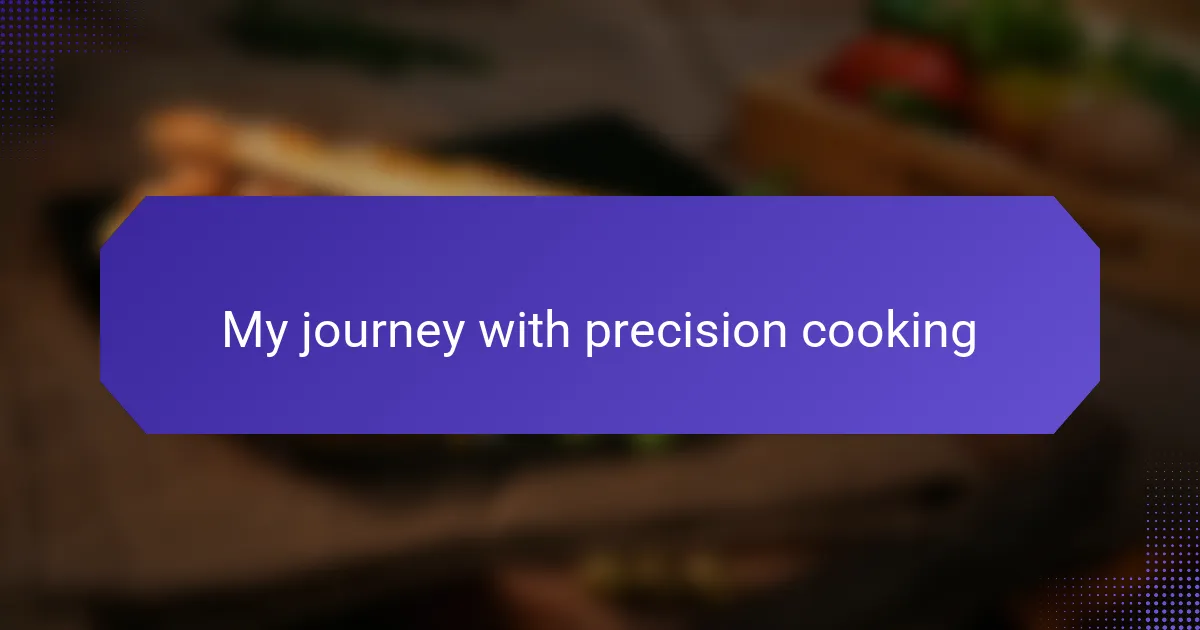
My journey with precision cooking
I remember the first time I stepped into the realm of precision cooking; it felt overwhelming yet exhilarating. As I sifted through Thomas Keller’s recipes, the meticulous attention to detail struck me. Each recipe demanded not just adherence to steps, but a true understanding of the science behind it. One evening, while my sous vide steak bubbled away in its water bath, I felt a surge of excitement knowing I was on the path to culinary mastery.
As I practiced, I also discovered how rewarding precision cooking can be. I recall the day I nailed my first Beef Wellington, carefully layering each flavor and ensuring the pastry was perfectly golden. The moment I sliced into it and saw the juicy pink inside was pure joy. It made me wonder: how had I ever trusted my cooking without such precision? That realization sparked a passion within me, igniting my desire to experiment further.
I’ve also learned that precision cooking isn’t merely about technique—it’s about confidence. I used to second-guess myself constantly, but now, with each successful dish, I’ve built a reservoir of self-assurance. The joy of transforming my kitchen into a hub of experimentation has kept me returning to Keller’s methods. It’s a journey, one where every recipe brings new challenges and triumphs that ignite my love for culinary creativity.
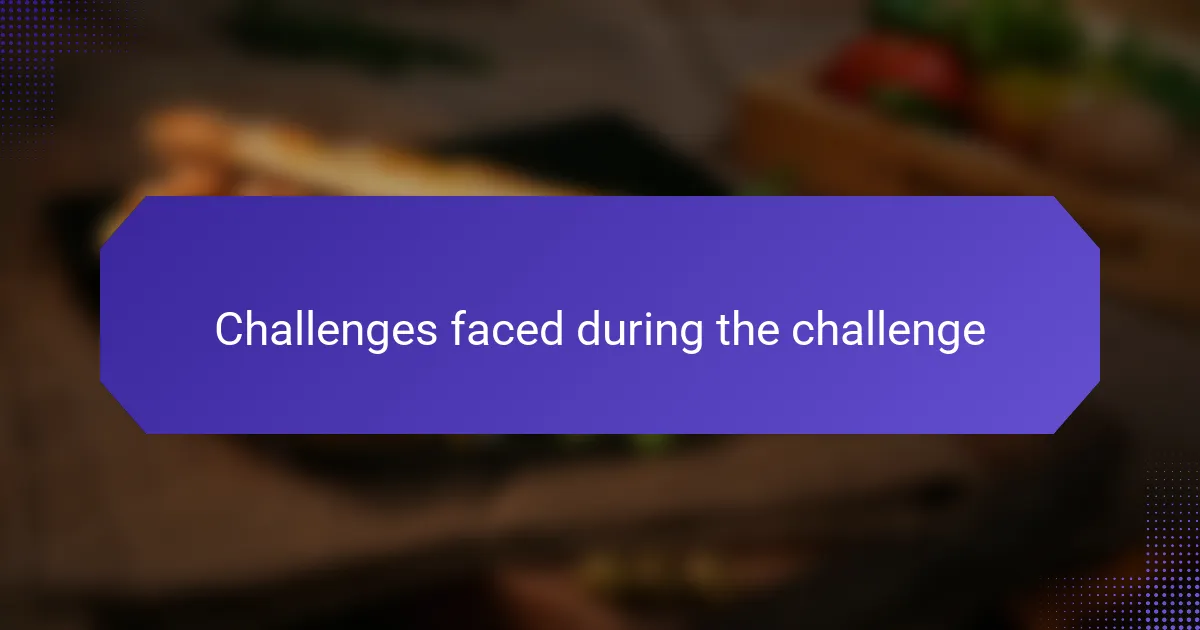
Challenges faced during the challenge
Cooking with Thomas Keller’s precision methods came with its fair share of challenges. One of the biggest hurdles I faced was overcoming my fear of failure. For instance, when I attempted sous vide for the first time, I was a nervous wreck thinking about whether I’d set the temperature correctly. Did I really trust that my steak wouldn’t be overcooked? The uncertainty lingered until I opened that bag and revealed a perfectly cooked piece of meat, which turned my panic into pure euphoria.
Additionally, mastering the art of timing became a battle of its own. I remember distinctly juggling multiple elements while preparing my Beef Wellington. Layering flavors and ensuring each component was ready at the same moment tested my multitasking skills. There was a moment of panic when I realized the pastry was getting too warm while I was still sautéing the mushrooms. How could I maintain Keller’s standards and keep everything on track? This challenge pushed me to rethink my entire approach to cooking and better manage my time in the kitchen.
Lastly, the meticulous attention to detail required was both exhilarating and exhausting. I found myself questioning every step, wondering if I had measured my ingredients accurately or if I had applied just the right amount of seasoning. At times, this self-doubt weighed heavily, but it also fueled my determination to improve. Each small misstep became a lesson, reshaping my confidence and understanding of the culinary craft. It taught me that even setbacks could lead to a greater sense of accomplishment, ultimately enhancing my cooking journey.

